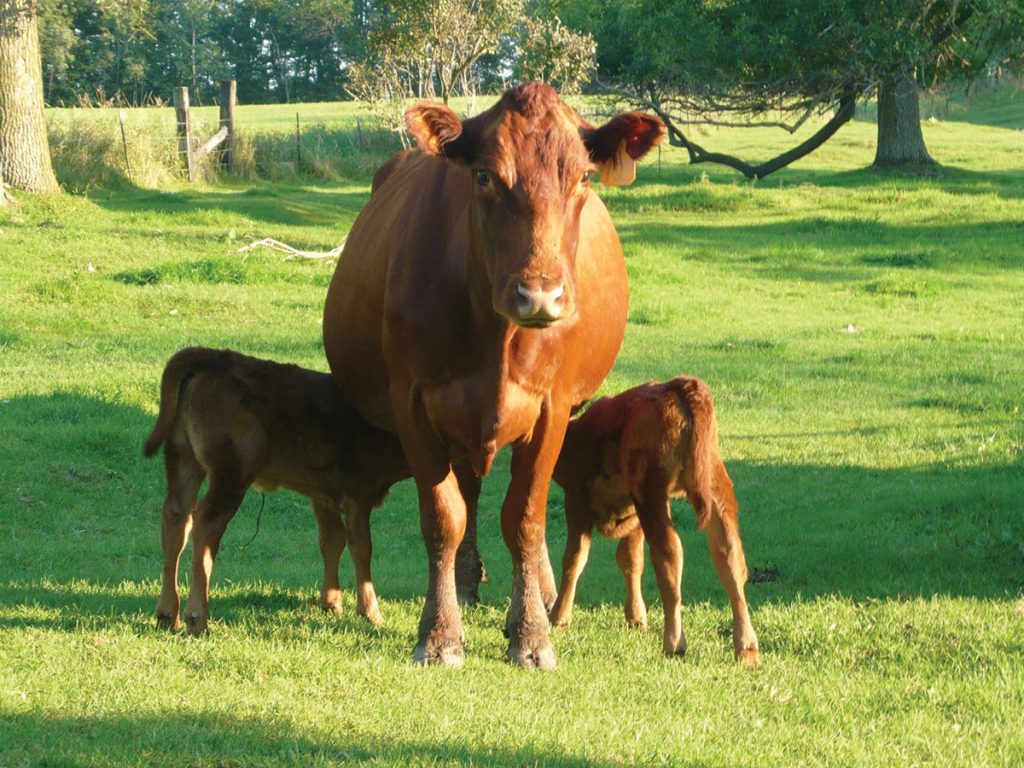
Twins can cause added stress to the mother and producer
While twins are not overly common in the cattle world, it does happen. It can be exciting to have a “two for one” situation, but it can also be a little more work for both the producer and the cow.
“Twin calves are relatively uncommon. Estimates of somewhere between .5 percent and 2 percent of births each year come as twins. That calculates out to being about a 1 in 50 to 1 in 200 chance of having twins,” Andy McCorkill, livestock field specialist with the University of Missouri Extension, explained.
Conditions such as improved cow body condition between calving and breeding can increase the likelihood of multiple ovulations and resulting twins, he said, and breeds noted for higher fertility have also been reported to have higher rates of twinning.
Twin calves, in some situations, can drain the cow and result in less than efficient calves, McCorkill said.
“It is often said that one good calf is better than two poor ones, and many times that is the case,” he explained. “Twins are more likely to experience calving difficulty. It will be harder on the cow, raising multiple calves instead of just one, and it can take its toll on her getting bred back in a timely manner.”
There are cases, however, where an exceptional cow can raise twins without issue, and breed back without trouble.
“Provided both calves survive until weaning, that cow will likely have a greater weaning weight in the combined calves than any single birth will, which makes the hassle worth it in some instances,” McCorkill saidl
For cows that struggle to rear twins, producers might need to be prepared for bottle feeding, as well as keeping in mind additional feed requirements for the cow, regardless of how well she maintains twins.
“If the cow appears to be accepting both calves, and raising them both on her own, I would tend to let her,” McCorkill said. “On the other hand, if she or one of the calves appears to be suffering, it is probably a good idea to pull one, or both, of the calves off and raise on the bottle or a nurse cow. Even if she is raising both calve without issue, you may find the need to wean the calves early to keep her in acceptable condition to breed back for the next calving season. Available feed resources should be considered. The additional milk requirement will add 10 to 15 percent to the cow’s overall energy requirements.”
Record keeping is imperative for all aspects of an operation, but if a cow gives birth to twins, producers should be certain to take notes.
These records will aid in making appropriate culling decisions – especially if the set of twins is a bull and a heifer.
“Heifers born twin to a bull should be suspected of being a freemartin, a case that results in the heifer being born without a complete reproductive tract,” McCorkill explained. “This occurs in about 90 percent of cases of bull/heifer twins as a result of mixing of embryonic fluids and their hormones between the two calves.”
The twin bull can also have reduced fertility. Producers might consider culling both twins.



